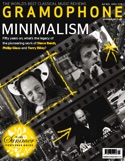Texte paru dans: / Appeared in: |
|
|
Outil de traduction (Trčs approximatif) |
|
|
Reviewer:
Nalen Anthoni
No tempo direction for the first movements of Nos 1-3 and 6. By tradition it could be a fast pace. But how fast? Hark back to Alfred Cortot (the firstever recordings in 1931-33) and he offers the slowest speeds. That of No 3, for example, at 73 beats, lasts eight minutes. In comparison, Rinaldo Alessandrini fixes on 110 and Concerto Köln 114 – a marked upward swing across 80 years; and the trend influences all the concertos. Then there is pitch, brought down to an ‘historically informed’ figure varying between A=430 and 415 until Richard Egarr chose 392, French Baroque pitch used in Germany at the time. Concerto Köln follow suit.
Their playing is technically remarkable. But with few exceptions – the finales of Nos 4 and 5 which are not scurried, the Affettuoso of No 5 very expressive – these performances all too often reflect only a sound-facsimile of the notes. Tempos are swift but are rarely enlivening because rhythm is unyielding; and a rigid drive leaves little room for dynamic shading or varying harmonic emphasis. Certain movements – the first of No 2, the third of No 3, the first and third of No 6 – feel hustled. Some of these characteristics may be ascribed to Gerald Hambitzer, whose insistent continuo playing in, for example, the Andante of No 2 holds the music to the bar-lines; and in the first movement of No 4 his prominence within the ensemble is close to distraction. He is indeed impressive in the first movement of No 5 – here better balanced – but his playing seems like virtuosity for its own sake. The two chords marked Adagio in No 3 are decorated as is common, though Thurston Dart, peerless in his day but now out of fashion, considered them ‘a punctuation mark’ and uncommonly interpolated the Largo from Bach’s Violin Sonata, BWV1021. Would that the few exceptions from Concerto Köln had been the norm. But the ‘aesthetic deviation from the regular’ that Carl Seashore believed was integral to ‘the artistic expression of feeling in music’ is not always a part of their intuitive impulses.
|
|
|
|
|
|
Cliquez l'un ou l'autre
bouton pour découvrir bien d'autres critiques de CD |
|




